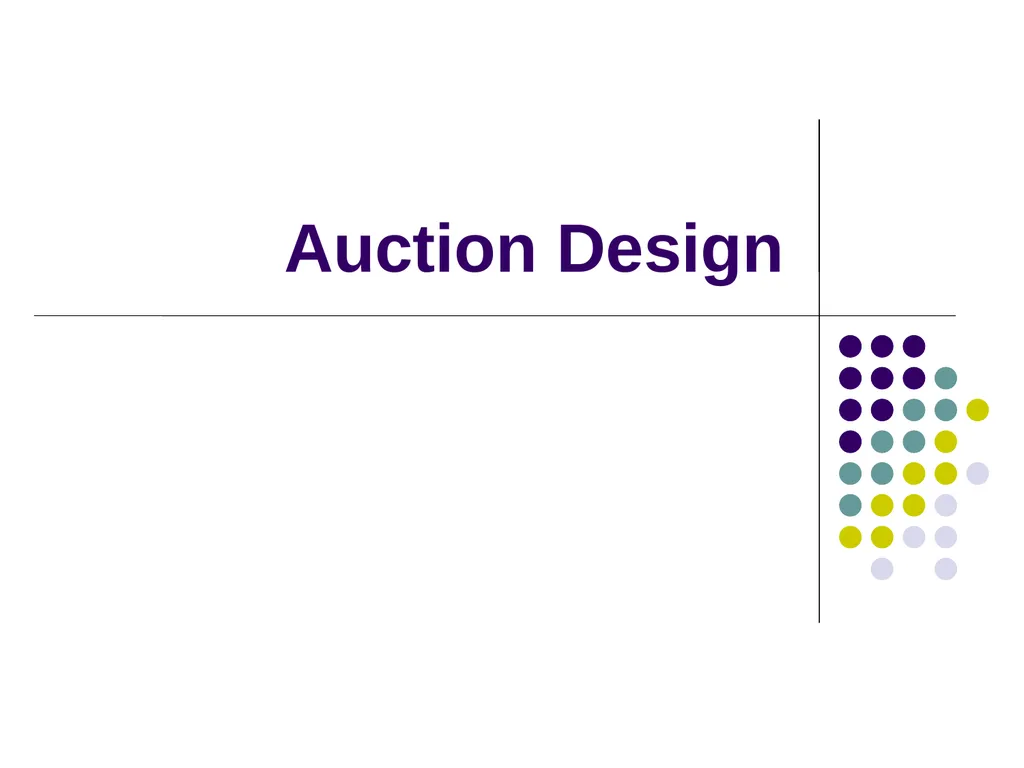Auction Design Background Last time: In a
Author : liane-varnes | Published Date : 2025-11-08
Description: Auction Design Background Last time In a benchmark model with symmetric bidders we saw that if bidders play according to Nash equilibrium then several common auction designs Result in an efficient allocation high value bidder wins
Presentation Embed Code
Download Presentation
Download
Presentation The PPT/PDF document
"Auction Design Background Last time: In a" is the property of its rightful owner.
Permission is granted to download and print the materials on this website for personal, non-commercial use only,
and to display it on your personal computer provided you do not modify the materials and that you retain all
copyright notices contained in the materials. By downloading content from our website, you accept the terms of
this agreement.
Transcript:Auction Design Background Last time: In a:
Auction Design Background Last time: In a benchmark model with “symmetric” bidders we saw that if bidders play according to Nash equilibrium, then several common auction designs Result in an efficient allocation: high value bidder wins. Result in same expected revenue: equal to the expected second highest value. Today: think more about auction design Strategies to increase revenue: reserve prices Strategies to favor certain bidders: subsidies. Practical concerns: entry and collusion. Reserve prices Two bidders, with values v1 and v2 Each vi drawn from uniform distribution on [0,100]. Last time we showed the expected revenue was 33. Can the seller benefit from setting a “reserve” price, i.e. a minimum price below which she won’t sell? Reserve prices, cont. Seller sets reserve price r Runs an ascending auction Clock starts from r and goes up, and bidders may choose not to be active at the beginning if they have low values. Three cases Both bidder values below r no sale. One value above r, one below r sale at r. Both values above r sale at lower value. Revenue with reserve price Expected revenue (add up three cases & probabilities) Expected revenue = 0 + 2r2(1-r) + (1-r)2[1/3 + (2/3)r] To maximize, set d(Exp Rev)/dr = 0 0= 4r - 6r2 - 2(1-r)(1/3+(2/3)r) + (2/3)(1-r)2 = 2r - 2r2 Optimal Reserve Price Optimal Reserve with N=2,3 Reserve price & competition Optimal reserve price is r=50 independent of number of bidders N (assuming all draw values from U[0,100]) - try it! Evidence on reserve prices We’ve seen how reserve prices work in theory but what about in practice. Does it help to set a higher reserve? Seems as if it might be hard to test At a used car auction, the bmws will have higher reserve prices than the chevys, but are also worth more. Best evidence would be experimental - sell multiple versions of the same thing with different reserve prices. Let’s see if we can find some examples on eBay. An eBay “experiment” Effect of reserve on Pr(Sale) From Einav, Kuchler, Levin, and Sundaresan (2012) “Seller Experiments” Effect of reserve on price Optimal reserve prices On eBay, the profit-maximizing reserve prices appear to be Very low reserve price: maximizes probability of sale and relies on competition to protect against low price outcome of auction. Or Very high reserve price: (close to item’s posted price) low chance of













